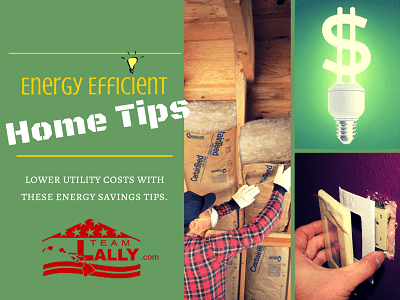Energy-efficient homes can benefit the homeowner as they are money in the bank. Not only do they lower utility costs, but also increase comfort levels and translate into higher property values. These are the top reasons to consider when determining what home repairs will add the greatest overall market value in remodeling and help your house to become more energy-efficient.
Insulate Your Hot-Water Tank
One area often overlooked in a home is the water heater. Insulating the water tank is a simple, effective way to help lower monthly utility costs. Installing a water heater blanket is an easy DIY project any homeowner can do in minutes. Adding foam wrap around pipes connected to the heater helps the water tank do its job effectively.
Seal Electrical Box Outlets
Homeowners fail to realize that electric outlets in each room are a source of unwanted airflow. Applying foam sealant around the outside of the electrical boxes will stop this flow of air into living areas of the home.
Try this energy saving tip. To make the outlets air tight, foam gaskets can be positioned in place before reinstalling the outlet covers. This ensures a complete seal around each electrical outlet that keeps unwanted drafts of cold air out of a room. It helps heating and cooling units work more efficiently.
Foam sealant is sold in cans at most home-improvement stores. Sealing all electrical outlets in a home can help cut high-energy cost and add comfort to the home. The use of foam gaskets guarantees all the outlets will be leak free.
Add Insulation to Attics
Insulating or adding more insulation to the attic will reduce annual utility costs tremendously. The secret to savings is being sure adequate amounts of insulation are in the attic. If the insulation already installed is below or even with the joist, then more can be added.
Insulate to a thickness of about 14 inches depending on what type of insulation is used. Loose fill or batt insulation is commonly used in attics. Loose fill provides better area coverage. On average, it is cheaper as well.
R-value is the measurement of insulation to resist heat flow. Higher R-values offer better thermal performance. Loose fill insulation can be added on top of batt insulation. If loose fill was added to the attic first, then a layer of batt insulation can be installed over the top of it.
Loose fill insulation can be messy to work with so it might be a good idea to have it professionally installed. It requires a blowing machine and is usually a two-man job. One will be feeding the hopper while the other works in the attic blowing the fill into the attic.
Exterior Wall Insulation
In old homes with little or no insulation, loose fill is a good choice because it can be blown into the wall cavities leading to an airtight seal. Most loose fill insulation is produced using recycled waste materials.
Blanket insulation is the most commonly used insulation in exterior walls. It can be purchased with and without facings. Facings are used as a barrier to prevent unwanted airflow and moisture from entering the home.
Rigid foam insulation provides better insulating value than loose fill or blanket insulation. Cellulose insulation is made from recycled newsprint providing great noise reducing abilities and stopping air leaks. Both rigid foam and cellulose insulation have similar qualities and can be found in many of the new energy efficient homes of today.
Under House Insulation
Installing blanket insulation under the floors will reduce cold air from seeping up through the floor. Basically, the rolled insulation is stapled in place and supported with wire hangers that act as a brace to support the insulation.
Always install the blanket insulation with the paper toward the ground to act as a moisture barrier and to keep a tight seal against air leaks.
Insulation acts as a protective barrier to keep the outside elements from entering the living area of a home, and most energy efficient homes have this area covered. The home should be insulated properly from the attic, exterior walls and under the floor to add comfort. It will dramatically reduce the amount of money spent on utility costs.

